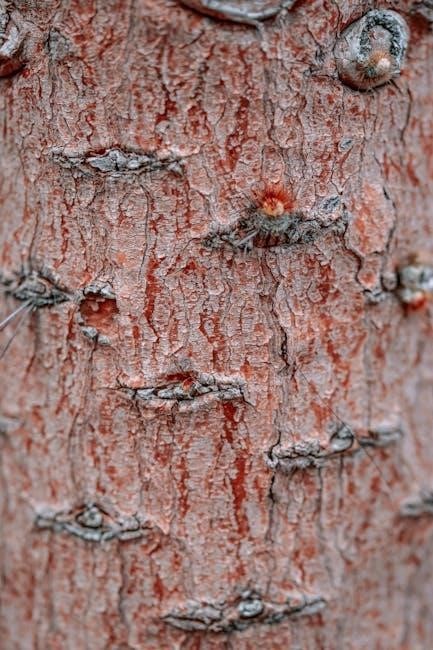Woody landscape plants are essential for structure, beauty, and biodiversity in outdoor spaces. This section introduces their significance, covering identification, ornamental traits, and cultural practices, as outlined in Michael Dirr’s manual.
Overview of Woody Plants in Landscaping
Woody plants form the structural backbone of landscapes, offering year-round interest. Trees, shrubs, and vines provide shade, shelter, and habitat diversity. Their durability and adaptability make them ideal for various environments, enhancing aesthetic appeal and ecological function. This section explores their role in creating balanced, sustainable landscapes, as detailed in Michael Dirr’s comprehensive manual.
Importance of Woody Plants in Ecosystems
Woody plants are vital to ecosystems, providing habitat, food, and shelter for wildlife. They stabilize soil, prevent erosion, and contribute to carbon sequestration. Their biodiversity supports pollinators and improves air quality, making them indispensable for environmental health and sustainable landscapes, as emphasized in Michael Dirr’s manual on their ecological and ornamental value.
Historical Use of Woody Plants in Landscape Design
Woody plants have been central to landscape design for centuries, providing structure, beauty, and functionality. From ancient formal gardens to modern eco-friendly designs, their versatility has endured. Michael Dirr’s manual highlights their historical significance, showcasing how they’ve shaped landscapes across eras, reflecting cultural and aesthetic evolution while maintaining ecological balance and ornamental value.
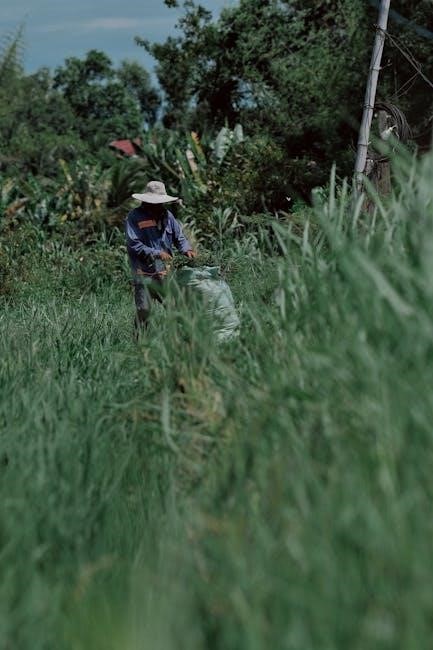
Identification of Woody Landscape Plants
Identification of Woody Landscape Plants
Accurate identification of woody plants is crucial for selection and care. Key characteristics include leaf morphology, venation, bark patterns, and stem features, as detailed in Dirr’s manual.
Key Characteristics for Identification
Key characteristics for identifying woody plants include leaf structure, venation patterns, bark texture, and stem features. These traits, detailed in Dirr’s manual, help distinguish species and ensure accurate selection for landscaping purposes.
Leaf Morphology and Venation Patterns
Leaf morphology and venation patterns are crucial for identification. Shapes, margins, and vein arrangements vary widely, offering unique identifiers. Dirr’s manual highlights these details, aiding in the precise recognition of woody plant species through detailed descriptions and line drawings.
Bark, Stem, and Bud Features
Bark, stem, and bud features provide valuable clues for plant identification. Bark texture, stem color, and bud arrangement vary among species. Dirr’s manual emphasizes these characteristics, offering detailed descriptions to help distinguish one plant from another, especially during winter when leaves are absent.
Ornamental Characteristics of Woody Plants
Woody plants enhance landscapes with vibrant foliage, flowers, and seasonal changes. Dirr’s manual highlights these traits, aiding gardeners in selecting plants for year-round beauty and functionality in diverse settings.
Foliage Color, Texture, and Variability
Woody plants offer diverse foliage, ranging from deep greens to vibrant hues, with varied textures and patterns. Dirr’s manual highlights these traits, emphasizing seasonal changes and ornamental value. Line drawings in the manual illustrate leaf morphology, aiding in identification and selection for landscapes. This variability enhances visual interest, making foliage a key element in design and plant choice.
Flower and Fruit Types
Woody plants produce a wide array of flowers and fruits, enhancing their ornamental value. Dirr’s manual details these features, from showy blossoms to berries, highlighting their role in attracting pollinators and providing seasonal interest. Descriptions accompany line drawings, aiding gardeners in selecting plants for beauty and ecological benefit, as noted in the latest edition of the manual.
Seasonal Interest and Ornamental Value
Woody plants offer year-round beauty through seasonal changes. Dirr’s manual highlights how flowering cherries bloom in spring, while Japanese maples display vibrant fall colors. Evergreens provide winter structure, and berry-producing shrubs attract wildlife. These traits, detailed with line drawings, help gardeners select plants for continuous interest and ecological value, as observed in Hillier Arboretum’s diverse collections.
Cultivation and Propagation of Woody Plants
Woody plants require specific soil preparation, watering practices, and propagation techniques. Dirr’s manual details methods like seeds, cuttings, and grafting, ensuring healthy growth and landscape value.
Soil Requirements and Preparation
Soil Requirements and Preparation
Woody plants thrive in diverse soils, but specific species demand tailored conditions. Dirr’s manual emphasizes soil pH, organic matter, and drainage. Proper preparation involves testing pH levels, amending with compost, and ensuring aeration for robust root development and overall plant health.
Watering and Irrigation Practices
Proper watering is crucial for woody plants’ establishment and growth. Dirr’s manual recommends deep, infrequent watering to encourage root depth. Mulching retains moisture, while drip irrigation efficiently delivers water to roots. Avoid overwatering, as it can lead to root rot. Soil moisture monitoring ensures optimal hydration, promoting healthy growth and resilience in varying conditions.
Propagation Methods: Seeds, Cuttings, and Grafting
Propagation Methods: Seeds, Cuttings, and Grafting
Dirr’s manual outlines three main propagation methods for woody plants. Seeds offer genetic diversity but require specific stratification. Cuttings, using stems or roots, ensure traits consistency. Grafting combines desirable features from different plants. Each method requires precise techniques and conditions to ensure success, as detailed in the manual for optimal plant multiplication and adaptation to various landscapes.
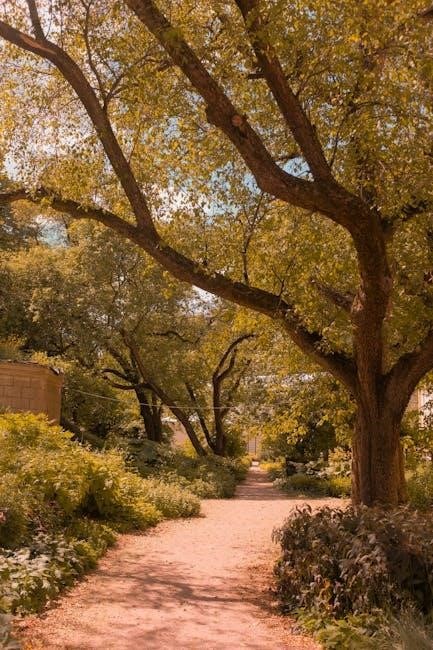
Uses of Woody Landscape Plants
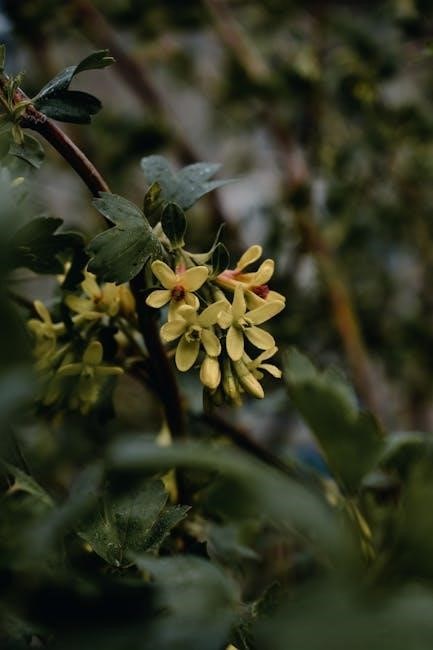
Uses of Woody Landscape Plants
Woody plants enhance biodiversity, serve as ornamental elements, and support urban landscapes. Their versatility in native plantings, hedges, and street tree applications makes them indispensable in landscaping design.
Native Plantings and Biodiversity
Native woody plants are vital for supporting local ecosystems, providing habitats for birds, insects, and pollinators. They enhance biodiversity by offering food and shelter, while their deep roots maintain soil health and prevent erosion. Using native species ensures landscapes remain sustainable and ecologically balanced, aligning with nature’s rhythms and promoting environmental harmony, as emphasized in Michael Dirr’s manual.
Ornamental Gardens and Hedges
Woody plants are cornerstone elements in ornamental gardens, offering year-round beauty through foliage, flowers, and seasonal changes. They are ideal for creating structured hedges, topiaries, or screening. Species like boxwood and privet are popular for formal hedges, while flowering shrubs add vibrant displays. Their versatility enhances garden designs, from modern to traditional, providing texture and visual interest throughout the year.
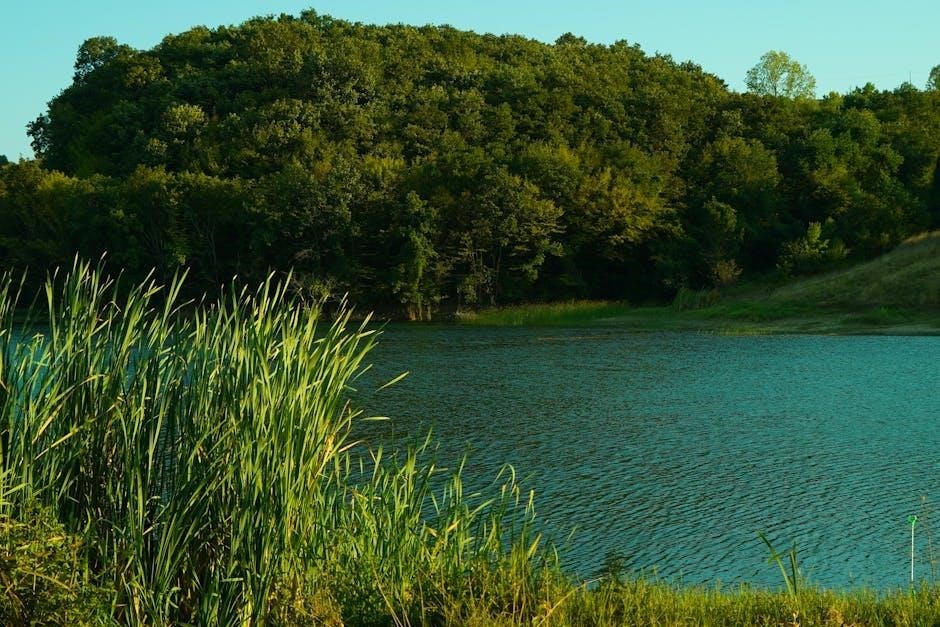
Urban Landscapes and Street Trees
Woody plants are vital in urban environments, serving as street trees and green infrastructure. They improve air quality, mitigate heat islands, and enhance aesthetics. Species like oaks and maples are popular for their resilience and shade. Proper selection ensures they thrive in challenging urban conditions, contributing to biodiversity and human well-being in cities. Their durability makes them ideal for urban landscaping challenges.
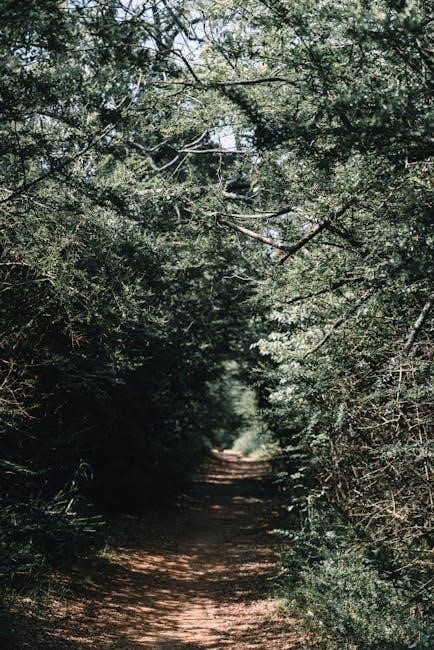
Plant Selection for Specific Conditions
Choosing the right woody plants involves matching species to climate zones, soil types, and moisture levels. This ensures optimal growth and landscape performance, as detailed in Dirr’s manual.
Climate Tolerance and Hardiness Zones
Woody plants vary in climate tolerance, with hardiness zones determining their suitability for specific regions. Dirr’s manual provides detailed notes on each species’ adaptability, ensuring optimal growth in diverse conditions. This information helps gardeners select plants that thrive in their local climate, enhancing landscape resilience and beauty. Practical advice is offered for matching plants to zones.
Soil pH and Nutrient Requirements
Woody plants exhibit varied soil preferences, with some thriving in acidic soils and others in alkaline conditions. The manual details specific nutrient needs, ensuring optimal growth. Understanding these requirements aids in selecting plants suited to local soil types, promoting healthy landscapes. Dirr’s insights guide gardeners in matching plants to soil conditions for maximum vigor and aesthetic appeal.
Drought and Flood Tolerance
Woody plants vary in tolerance to drought and flood conditions. Drought-tolerant species often have deep roots or waxy leaves, while flood-tolerant plants adapt to saturated soils. Dirr’s manual highlights these traits, enabling gardeners to choose plants suited to challenging environments. This knowledge is crucial for resilient landscaping in areas with extreme water conditions, ensuring plant survival and ecosystem balance.
Maintenance and Care of Woody Plants
Regular pruning, mulching, and pest management are essential for woody plant health. Proper techniques ensure vigorous growth, shape, and resilience, as detailed in Dirr’s manual.
Pruning Techniques for Health and Shape
Pruning is vital for maintaining woody plants’ health and aesthetics. Techniques include removing deadwood, shaping for structure, and promoting airflow. Dirr’s manual emphasizes timing and tools for optimal results, ensuring plants thrive while preserving natural beauty.
Mulching and Soil Conservation
Mulching retains moisture, suppresses weeds, and regulates soil temperature, benefiting woody plants. Organic mulch like wood chips or bark improves soil health. Dirr’s manual highlights proper application depths and material choices to ensure effective soil conservation and root protection.
Pest and Disease Management
Effective management of pests and diseases in woody plants involves early detection, biological controls, and targeted treatments. Michael Dirr’s manual emphasizes integrated strategies to maintain plant health, reducing reliance on chemical pesticides and fostering resilient landscapes through sustainable practices.
Diseases and Pests in Woody Plants
Diseases and pests pose significant threats to woody plants, impacting health and aesthetics. This section explores common pathogens and insects, drawing from Michael Dirr’s comprehensive manual.
Common Diseases: Fungal, Bacterial, and Viral
Woody plants are susceptible to various diseases, including fungal infections like powdery mildew, bacterial issues such as fire blight, and viral diseases that distort growth. Michael Dirr’s manual provides detailed insights into identifying these pathogens, emphasizing symptoms and management strategies to protect plants and maintain their health in landscapes.
Insect Pests and Their Impact
Woody plants often face threats from insect pests such as aphids, scale, and borers. These pests can cause damage by sucking sap, distorting growth, or tunneling into tissues. Michael Dirr’s manual highlights the importance of early detection and integrated pest management strategies to mitigate their impact and ensure plant health in landscape settings.
Integrated Pest Management Strategies
Michael Dirr’s manual emphasizes holistic approaches to managing pests, combining biological, cultural, and chemical controls. Techniques include introducing natural predators, pruning infested areas, and using targeted pesticides. This balanced strategy minimizes environmental impact while protecting woody plants from pests, ensuring sustainable landscape health and biodiversity.

Conservation of Woody Plant Species
Conservation of woody plants focuses on preserving biodiversity and protecting endangered species. Arboreta and botanical gardens play an important role in safeguarding these plants for future generations.
Threats to Woody Plant Biodiversity
Woody plant biodiversity faces threats from habitat loss, invasive species, and climate change. These factors disrupt ecosystems and reduce species populations, highlighting the need for sustainable practices and conservation efforts to protect these vital plants.
Role of Arboreta and Botanical Gardens
Arboreta and botanical gardens play a crucial role in preserving woody plant diversity. They serve as living repositories for rare species, conduct research, and educate the public. These institutions also facilitate plant breeding and conservation, ensuring the survival of woody plants for future generations.
Sustainable Practices in Landscaping
Sustainable landscaping emphasizes eco-friendly methods to maintain plant health and minimize environmental impact. This includes water conservation, organic mulching, and integrated pest management. By selecting native species and reducing chemical use, these practices promote biodiversity and long-term ecosystem health, aligning with the principles outlined in Michael Dirr’s manual.
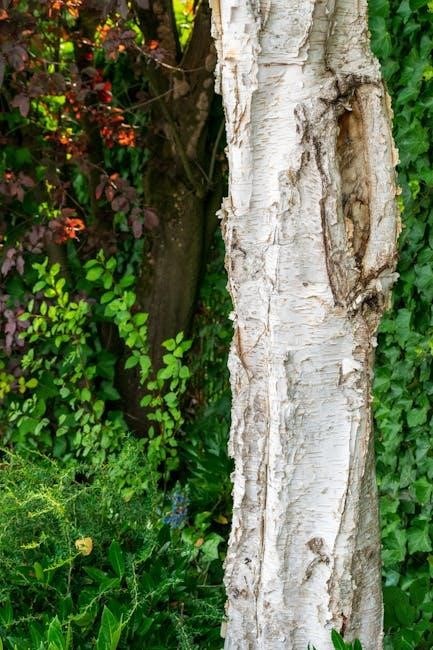
History and Development of the Manual
Michael Dirr’s manual has evolved through multiple editions, incorporating new research and insights. Its development reflects a commitment to comprehensive coverage of woody plants, ensuring accuracy and relevance for horticulture professionals and enthusiasts alike.
Author Michael Dirr and His Contributions
Dr. Michael Dirr, a renowned horticulture professor, has significantly impacted the field through his detailed manual. His work spans over decades, offering insights into plant identification, cultivation, and ornamental value. Dirr’s research, including his sabbatical at Hillier Arboretum, has enriched the manual, making it a vital resource for professionals and enthusiasts in woody plant horticulture.
Evolution of the Manual Through Editions
Michael Dirr’s manual has evolved significantly through multiple editions. The sixth edition includes updated notes from his sabbatical at Hillier Arboretum, enhancing its depth. Each edition incorporates new plant discoveries, revised cultural practices, and expanded identification characteristics, solidifying the manual’s reputation as a comprehensive guide for horticulture professionals and enthusiasts alike.
Notable Updates in the Latest Edition
The latest edition of Dirr’s manual features extensive updates, including new plant profiles and insights from his research at Hillier Arboretum. Enhanced identification details, revised propagation techniques, and expanded discussions on ornamental traits ensure the manual remains a vital resource for horticulturists, landscapers, and gardeners seeking current, reliable information on woody plants.

Case Studies and Practical Applications
Dirr’s manual highlights real-world applications of woody plants in landscaping through detailed case studies, showcasing successful projects that demonstrate effective plant selection and design strategies.
Successful Landscaping Projects
Successful Landscaping Projects
Dirr’s manual showcases successful landscaping projects, such as the Hillier Arboretum and the University of Georgia campus, highlighting how woody plants enhance beauty and functionality. These examples demonstrate effective plant selection, design strategies, and sustainable practices, providing valuable insights for professionals and enthusiasts. Such projects illustrate the practical application of Dirr’s expertise in creating thriving landscapes.
Lessons Learned from Real-World Examples
Michael Dirr’s manual highlights lessons from real-world projects, emphasizing adaptability to site conditions and long-term plant performance. Case studies, such as the Hillier Arboretum, demonstrate how selecting the right species and understanding growth habits lead to resilient, aesthetically pleasing landscapes. These examples provide practical insights for designing and maintaining successful woody plant landscapes over time.
Best Practices for Plant Selection
Best practices for plant selection involve assessing site conditions, climate tolerance, and soil compatibility. Michael Dirr’s manual emphasizes choosing plants suited to specific environments, ensuring long-term health and aesthetic appeal. Consider factors like growth habits, hardiness zones, and maintenance needs. Dirr’s insights from the Hillier Arboretum highlight the importance of matching plants to their surroundings for successful landscapes.
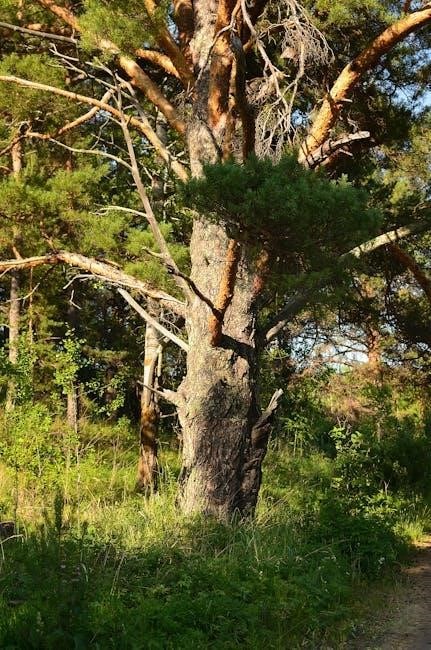
Glossary of Terms
A glossary of terms provides definitions for key horticultural terminology, aiding in the identification and care of woody plants, as detailed in Michael Dirr’s manual.
Key Terminology in Woody Plant Horticulture
Essential terms include taxon, leaf morphology, venation, bark patterns, and propagation methods. These terms are vital for understanding plant identification, growth habits, and cultivation practices in woody plant horticulture, as outlined in Michael Dirr’s comprehensive manual.
Definitions for Identification and Care
Key terms like hardiness zones, soil pH, and ornamental traits are defined to aid in plant selection and maintenance. Understanding these concepts ensures proper care and optimal growth of woody plants in various landscapes, as detailed in Michael Dirr’s manual.
Woody landscape plants are vital for sustainable design, offering beauty and ecological benefits. Michael Dirr’s manual remains a cornerstone for professionals and enthusiasts, guiding future trends in plant use and conservation.
Woody landscape plants are indispensable in landscaping, offering structural beauty and ecological benefits. Michael Dirr’s manual provides comprehensive insights into their identification, ornamental traits, and cultural practices, emphasizing biodiversity and sustainability. Updated with global research, it remains a vital resource for horticulturists, designers, and enthusiasts, ensuring informed plant selection and optimal landscape management.
Future Trends in Woody Landscape Plant Use
Future trends emphasize sustainable practices, climate resilience, and biodiversity. Selection of disease-resistant, low-maintenance species will rise, alongside increased use of native plants. Advances in propagation and technology will enhance plant availability. Dirr’s manual highlights these shifts, guiding horticulturists and designers to create adaptable, eco-friendly landscapes, ensuring woody plants remain central to future design and environmental strategies.
